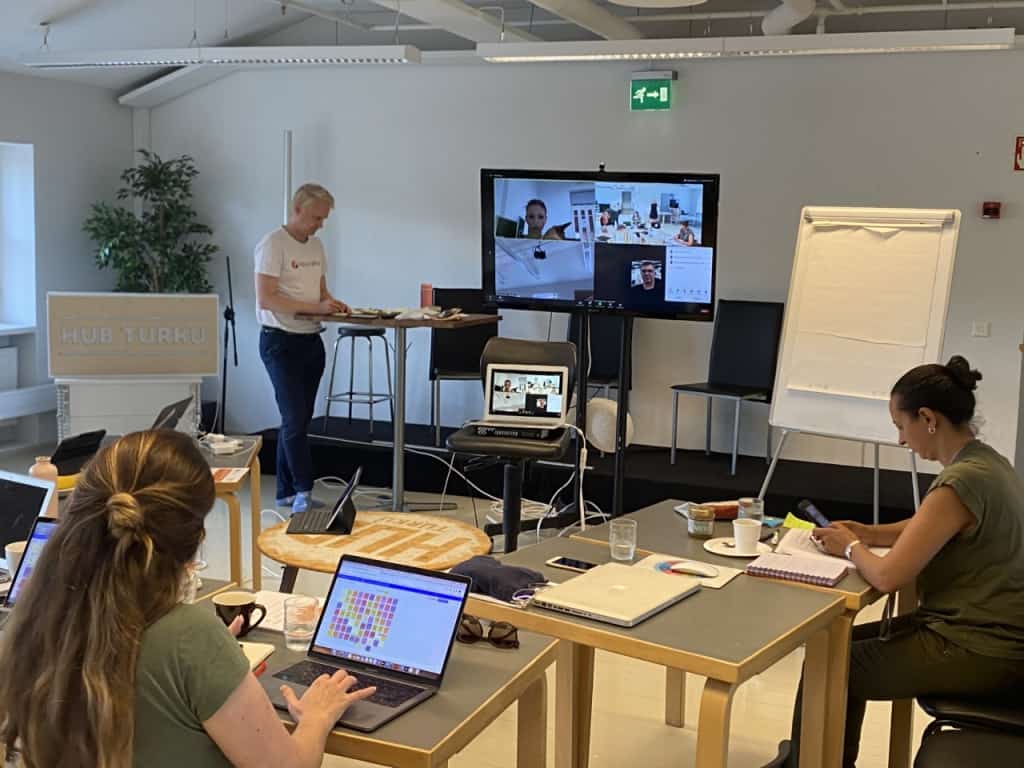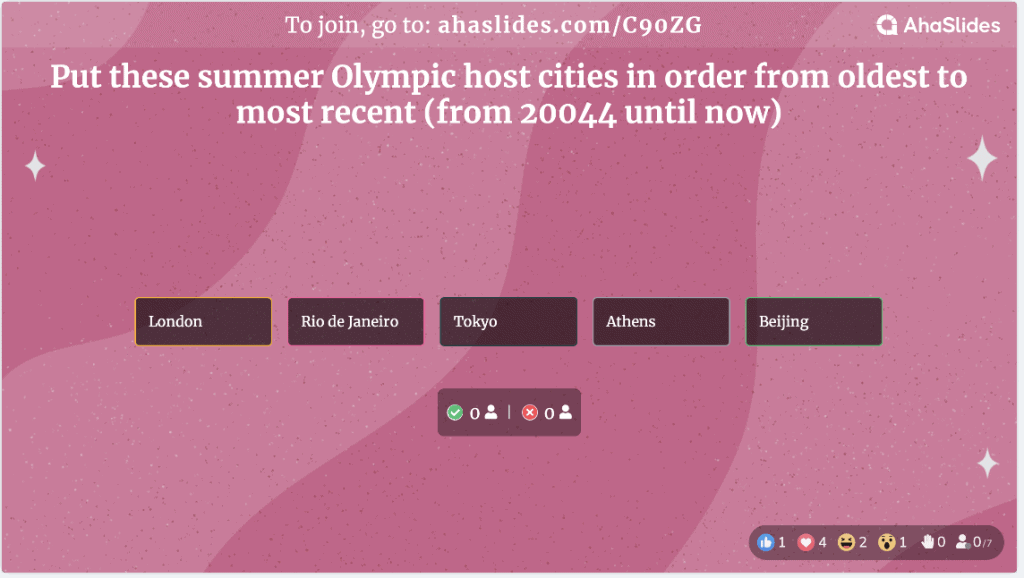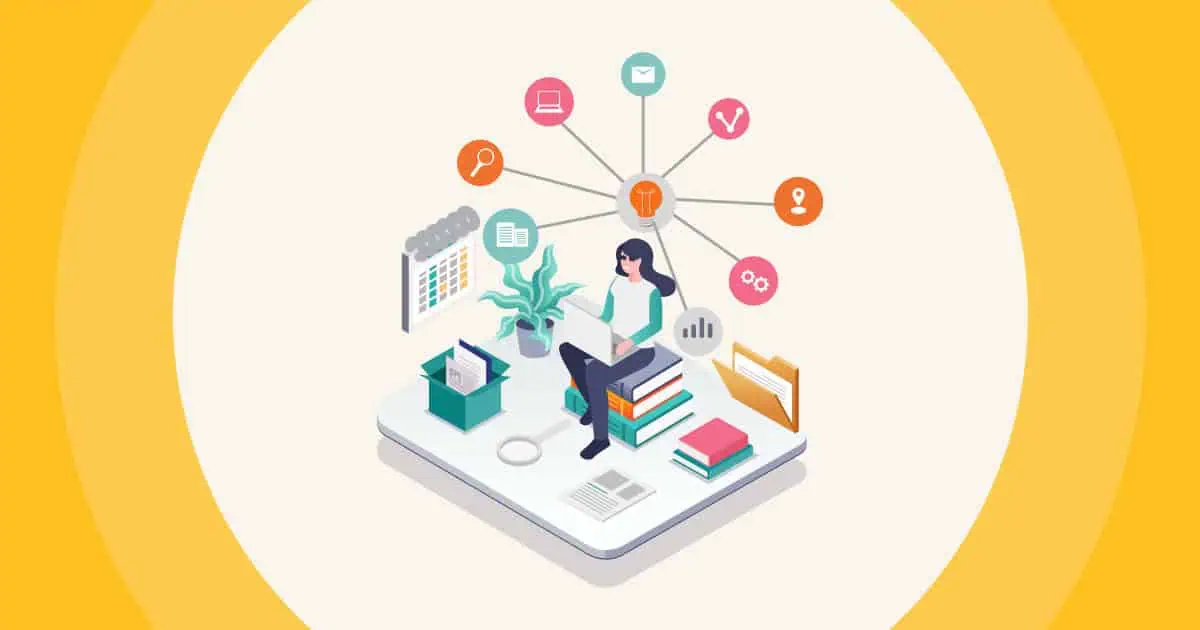Are you are in Romania and want to have a master's degree in the United States with cost-effectiveness and flexibility, distance learning might be one of your best options. What's more? There are many forms of distance learning besides online courses that you might never really think of. Let's learn more about distance learning, its definition, types, pros and cons, tips to learn remotely efficiently, and find out whether distance learning suits you.

Table of Contents
- What is distance learning?
- What are the pros and cons of distance learning?
- What is a type of distance learning?
- How to improve the quality of distance learning?
- Frequently Asked Questions
- Bottom Line
Tips for Better Engagement

Start in seconds.
Need an innovative way to heat up your online classroom? Get free templates for your next class. Sign up for free and take what you want from AhaSlides!
🚀 Grab Free Account
What is distance learning?
Broadly speaking, distance learning or distance education is an alternative to traditional class learning which allows individuals to pursue their studies and complete coursework remotely at any time and anywhere, without having to be physically present in a classroom on any campus.
It is not a new concept, distance education emerged in the early 18th century and became much more popular after the boom of the digital era in the 2000s and the Covid-19 pandemic.
Related: Visual Learner | What it Means, and How to Become One in 2025
What are the pros and cons of distance learning?
Though learning remotely has various benefits, it has some drawbacks. Thus it is important to take a look at both their pros and cons before deciding to spend time and effort on distance learning.
Advantages of distance learning:
- Remote courses are designed with flexible schedules, so you can pursue your degree while working as a part-time or full-time faculty
- You don't have to worry about geography restricted as you can choose the course providers around the world
- Many distance learning programs are less expensive than normal courses and some are even free of charge
- The providers are prestigious universities like Harvard, Stanford, MIT, and more
- Courses in distance education vary from field to field, you can almost access any specialty that you desire.
Disadvantages of distance learning:
- Remote courses are designed with flexible schedules, so you can pursue your degree while working as a part-time or full-time faculty
- You don't have to worry about geography restricted as you can choose the course providers around the world
- Many distance learning programs are less expensive than normal courses and some are even free of charge
- The providers are prestigious universities like Harvard, Stanford, MIT, and more
- You might miss many on-campus activities and campus life.
What is a type of distance learning?
Here are some most popular forms of distance education that are available on universities' websites and many online learning platforms.
Correspondence classes
Correspondence courses were the earliest form of distance learning. Students would receive study materials through the mail and submit assignments via post in a given amount of time, then return finished assignments to receive feedback and grades.
One famous example of correspondence classes is the University of Arizona, where you can reach a range of credit and non-credit college and high school courses which are available in majors such as accounting, political science, and writing.
Hybrid courses
Hybrid learning is the combination of in-person and online learning, in other words, hybrid learning. This form of education surpasses online learning in terms of hands-on training, interaction, and collaboration with your peers as well as getting support from instructors for labs and lectures.
For example, you can undertake an MBA program at Stanford following a schedule like this: in-person meetings twice a week on Mondays and Fridays and a virtual meeting fully on Zoom on Wednesdays.

Open Schedule Online Courses
Another kind of distance education, Massive Open Online Courses (MOOCs) gained popularity in around 2010, due to their free or low-cost online courses to a large number of learners worldwide. It offers a more affordable and flexible way to learn new skills, advance your career and deliver quality educational experiences at scale.
Stanford Online, Udemy, Coursera, Havard, and edX are the top MOOC providers, with many exceptional programs in Computer Science, Machine Learning, Justice, Artificial Intelligence, Marketing, and more.
Video conferences
It is also possible to follow distance education through Conferences classes. This form of learning involves live video or audio sessions where instructors deliver lectures, presentations, or interactive discussions to remote participants. These classes can be conducted in real-time, allowing students to engage with the instructor and fellow learners from different locations.
For example, you can learn many skills that you need to stay ahead with experts from LinkedIn Learning.
Synchronous and Asynchronous courses
In distance learning, courses can be categorized as either synchronous or asynchronous, referring to the timing and mode of interaction between instructors and students. Synchronous courses involve real-time interaction with scheduled sessions, providing immediate feedback and simulating a traditional classroom. On the other hand, Asynchronous courses offer flexibility with self-paced learning, allowing students to access materials at their convenience.
Related: Kinesthetic Learner | Best Ultimate Guide in 2025
How to improve the quality of distance learning?
To improve the quality of remote learning, learners can implement the following several strategies:
- Establish clear communication channels for timely feedback and support.
- Enhance course design with interactive and engaging content, utilizing multimedia tools.
- Promote active student participation through discussion boards, group projects, and collaborative activities.
- Offer comprehensive and accessible online resources, including lecture recordings and supplementary materials.
- Provide professional development opportunities for instructors to enhance their online teaching skills.
- Continuously evaluate and incorporate feedback to refine the distance learning experience and address challenges.
AhaSlides with many advanced features can be a great tool to help instructors improve the quality of remote learning courses at an economical cost. Its interactive presentation capabilities, such as live polling, quizzes, and interactive Q&A sessions, promote student engagement and active participation.
The platform's ease of use allows instructors to create interactive content quickly, while its compatibility with various devices ensures accessibility for all learners. Additionally, AhaSlides offers real-time analytics and feedback, enabling instructors to assess student progress and adapt their teaching accordingly.

Frequently Asked Questions
What is the difference between distance learning and online learning?
The key difference between the two learning types is distance learning is a subset of e-learning that focuses on remote education. While e-learning focuses on learning through digital resources and technology, students in distance learning are physically separated from their instructors and interact primarily through online communication tools.
Who uses distance learning?
There is no strict regulation of who can or cannot participate in distance learning, especially in the context of higher education. Distance learning provides opportunities for individuals from various backgrounds, including students who may not have access to traditional educational institutions, working professionals looking to upskill or pursue advanced degrees, individuals with family or caregiving responsibilities, and those who require flexible learning options due to geographic constraints or personal circumstances.
How do you overcome distance learning?
To overcome challenges in distance learning, the most significant thing is that learners have to establish a structured schedule, set clear goals, and maintain self-discipline.
Bottom Line
Is distance education right for you? With the development and evolution of technology, learning everything at your own pace is convenient. If you want to accommodate both work and school schedules, to balance families and profession, distance education is right for you. If you are inclined to follow your interest and seek personal growth while maintaining a flexible lifestyle, distance education is right for you. So, don't let the constraint of time, location, or finance limit your potential.
Ref: Study Portal








